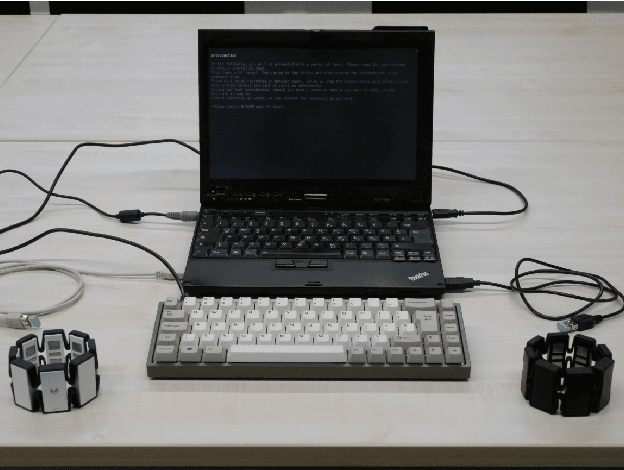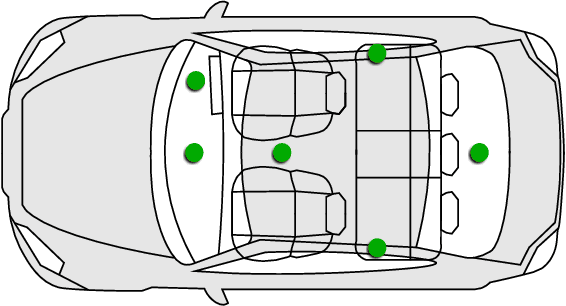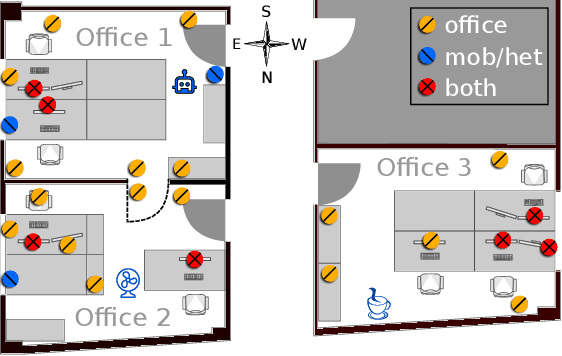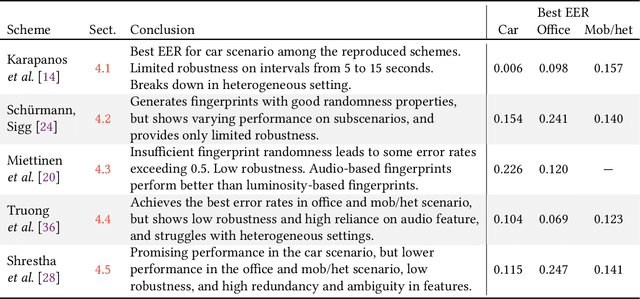Max Maass
My Armband Leaks Passwords: An EMG and IMU Based Keylogging Side-Channel Attack
Dec 04, 2021



Abstract:Wearables that constantly collect various sensor data of their users increase the chances for inferences of unintentional and sensitive information such as passwords typed on a physical keyboard. We take a thorough look at the potential of using electromyographic (EMG) data, a sensor modality which is new to the market but has lately gained attention in the context of wearables for augmented reality (AR), for a keylogging side-channel attack. Our approach is based on neural networks for a between-subject attack in a realistic scenario using the Myo Armband to collect the sensor data. In our approach, the EMG data has proven to be the most prominent source of information compared to the accelerometer and gyroscope, increasing the keystroke detection performance. For our end-to-end approach on raw data, we report a mean balanced accuracy of about 76 % for the keystroke detection and a mean top-3 key accuracy of about 32 % on 52 classes for the key identification on passwords of varying strengths. We have created an extensive dataset including more than 310 000 keystrokes recorded from 37 volunteers, which is available as open access along with the source code used to create the given results.
* 24 pages, 10 figures, the source code is available at https://github.com/seemoo-lab/myo-keylogging and the dataset is available at https://doi.org/10.5281/zenodo.5594651
Perils of Zero-Interaction Security in the Internet of Things
Jan 22, 2019



Abstract:The Internet of Things (IoT) demands authentication systems which can provide both security and usability. Recent research utilizes the rich sensing capabilities of smart devices to build security schemes operating without human interaction, such as zero-interaction pairing (ZIP) and zero-interaction authentication (ZIA). Prior work proposed a number of ZIP and ZIA schemes and reported promising results. However, those schemes were often evaluated under conditions which do not reflect realistic IoT scenarios. In addition, drawing any comparison among the existing schemes is impossible due to the lack of a common public dataset and unavailability of scheme implementations. In this paper, we address these challenges by conducting the first large-scale comparative study of ZIP and ZIA schemes, carried out under realistic conditions. We collect and release the most comprehensive dataset in the domain to date, containing over 4250 hours of audio recordings and 1 billion sensor readings from three different scenarios, and evaluate five state-of-the-art schemes based on these data. Our study reveals that the effectiveness of the existing proposals is highly dependent on the scenario they are used in. In particular, we show that these schemes are subject to error rates between 0.6% and 52.8%.
 Add to Chrome
Add to Chrome Add to Firefox
Add to Firefox Add to Edge
Add to Edge